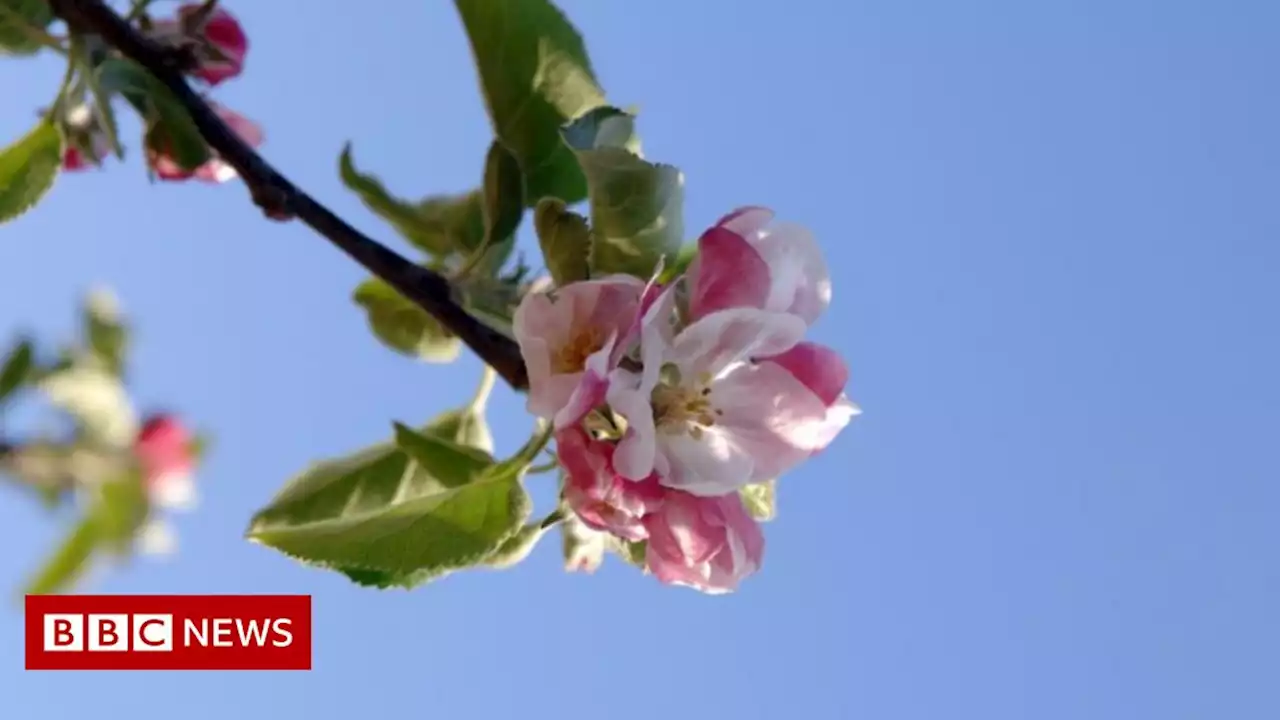Orchards are in big decline, with an area the size of the Isle of Wight lost since 1900, research finds.
The colourful display of springtime blossom has been part of British folklore and culture for centuries, with fruit trees in orchards among the first to bloom.
"It matters for people to be able to enjoy the beauty of that burst of blossom in the spring and it matters for nature," said head of historic environment at the trust, Tom Dommett. Traditional orchards can support wildlife, such as flies, bees, bats and birds. The knotted trunks and branches of trees provide a home for patrolling bats; while flowers are a food source for pollinating insects.
The researchers used artificial intelligence to analyse historic maps held by the National Library of Scotland, combined with data sets compiled by Natural England and The People's Trust for Endangered Species.Modern and traditional orchards across England and Wales have declined by 56%, with 43,017 hectares left growing today - equivalent to an area slightly larger than the Isle of WightKent is the English county with the highest total orchard cover today.
The National Trust has vowed to plant four million blossoming trees as part of its commitment to plant and establish 20 million trees across England, Wales and Northern Ireland by 2030.
